Mineral Crystal Structures
In the article “What Are Minerals,” we looked at five properties that classify an element or compounds of elements as a mineral. To sum it up, the five properties are as follows:
- A mineral is solid.
- A mineral is naturally occurring.
- Minerals are inorganic substances.
- Minerals have a specific, predictable chemical composition.
- Minerals have an ordered crystalline structure.
The fifth property, “Minerals have an ordered crystalline structure,” is what we’re going to look at in greater detail.
Minerals occur naturally as crystals, and every mineral crystal has an orderly three-dimensional pattern of atoms that repeats itself over and over. The more it repeats itself, the larger the crystal “grows.” External flat surfaces of the growing crystal called faces, join together to create varying shapes. The shape of the resulting crystals mirror the internal structure of the atoms, reflecting the symmetry of the crystals’ lattice, such as a cube, a hexagon or any other number of shapes.
Crystals not only come in all shapes but also in all sizes. Some crystals are so small they can be seen only with a magnifying glass, or sometimes, only with a microscope. Crystals have also been known to grow extraordinarily large, such as the Selenite crystals found in the Cave of the Crystals in Mexico. The largest Selenite crystal in this cave, at a size of 39’ in length, 13 feet in diameter and 55 tons in weight, is one of the largest natural crystals in the world - larger than a bus!
As crystals grow, changes in temperature, pressure and chemical composition can directly affect the internal atomic pattern, thus changing the shape of the crystals, resulting in an almost endless variety of crystal patterns.
In order for these repeating patterns to grow into a complete crystal with identifiable geometric forms and flat faces requires an ideal environment that includes room for unimpeded growth. This can result in single crystals or clusters of numerous crystals. When this crystal growth occurs in an environment without room to grow, the crystals will all grow together into a solid mass. When there are different crystal structures growing together in a solid mass, the result is a mass of varying interwoven crystals, as is the case of most rocks, such as granite.
The internal crystalline structure of a mineral determines its physical properties, including crystal shapes, hardness, luster, cleavage, diaphaneity (transparent, translucent or opaque), streak and color (covered in the article "Mineral Properties"). In addition, impurities combined (or layered) with the existing atomic structure can add an almost endless variety of colors to minerals, such as Calcite, Quartz and Fluorite.
There are numerous crystal shapes, and when all of the variations are factored in, the number of crystal shapes is seemingly endless. But every crystal shape and variation has its root in one of six crystal systems: Isometric (or cubic), hexagonal, tetragonal, orthorhombic, monoclinic, and triclinic. Each crystal system is by a combination of the following three factors:
- How many axes it has.
- The lengths of the axes.
- The angles at which the axes intersect.
Isometric (or Cubic)
The simplest crystal system is the Isometric/Cubic crystal system. It has 3 axes of the same length and all axes intersect at 90° to each other.

Minerals that have a Cubic/Isometric crystal structure include: Halite, Galena, Fluorite, Pyrite, Magnetite, Diamond, Garnets and Sphalerite.
Hexagonal
Five of the six crystal systems have 4 sides and 3 axes. The one exception is the Hexagonal crystal system which has 4 axes, 3 of equal length that intersect at 60° and a 4th longer axis that intersects the shorter 3 axes at 90°, which gives these crystals 6 sides.

Minerals that have a Hexagonal crystal structure include: Aquamarine, Emerald, Quartz varieties, Tourmaline, Calcite, Corundum, Hematite and Ice(!).

*Personally, I struggled with the classification of Calcite and its rhombohedral crystal formation being associated with the Hexagonal crystal structure. I searched, studied, and finally came upon an explanation that I was able to draw up, and thus finally make sense of the association. I'm a visual person, and seeing it mocked up in conjunction with the Hexagonal crystal 3-D drawing and the rhombohedral integration was enlightening!
Tetragonal
The Tetragonal crystal system is similar to the Isometric/Cubic crystal system in that all 3 axes intersect at 90°, but only two of the axes are of equal length whereas the 3rd axis is either longer or shorter than the other two.

Minerals that have a Tetragonal crystal structure include: Apophyllite, Cassiterite, Rutile, Scheelite, Wulfenite, Powellite, Anatase, Chalcopyrite and Zircon.
Orthorhombic
In the Orthorhombic crystal system, all 3 axes intersect at 90°. However, all 3 axes are unequal lengths.

Minerals that have an Orthorhombic crystal structure include: Celestite, Aragonite, Barite, Cerussite, Hemimorphite, Stilbite, Sulfur and Topaz.
Monoclinic
In the Monoclinic crystal system only 2 of the 3 axes intersect at 90° while the 3rd axis intersects at an angle other than 90°. In addition, all 3 axes are unequal lengths.

Minerals that have a Monoclinic crystal structure include: Azurite, Dioptase, Staurolite, Crocoite, Malachite, Kunzite, Orthoclase, Selenite, Epidote and Micas.
Triclinic
In the Triclinic crystal system all three axes are unequal lengths and none of the 3 axes intersect at 90°.

Minerals that have a Triclinic crystal structure include: Kyanite, Amazonite, Labradorite, Rhodonite, Albite, Gyrolite, Okenite and Turquoise.
Mineralogy is a subject of geology specializing in the scientific study of the chemistry, crystal structure, and physical properties of minerals. The chemistry dictates the crystal structure, and the crystal structure defines the physical properties. Understanding crystals, their formation and their properties is an integral part of an understanding of mineralogy, not only aiding in the identification and study of minerals, but enhancing your aesthetic appreciation for the diverse world of crystals and aiding tremendously in your personal collecting.




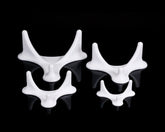
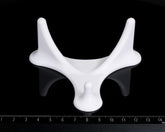
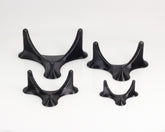
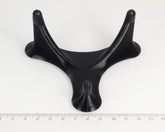
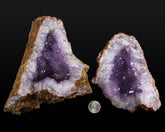
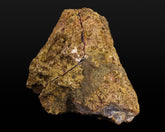
Leave a comment
Please note, comments need to be approved before they are published.